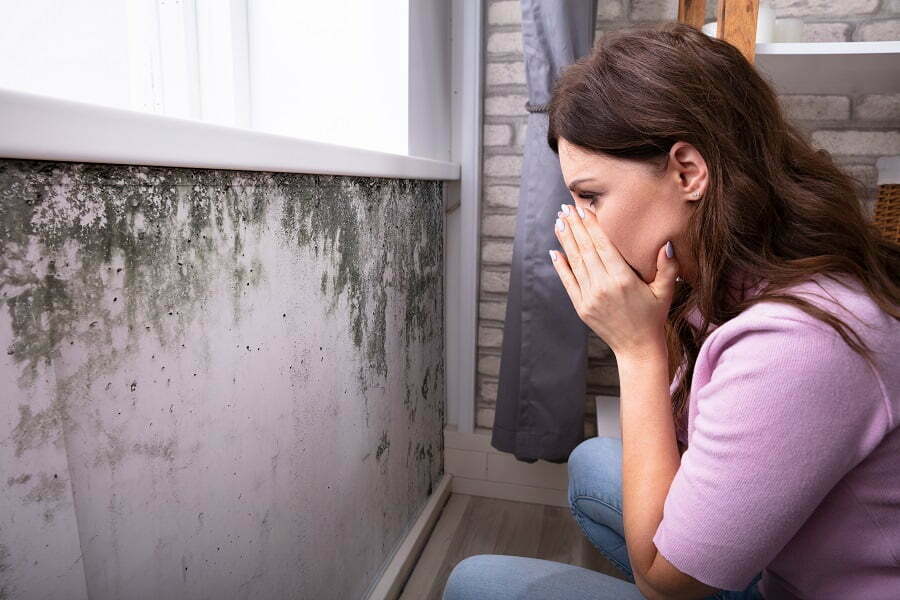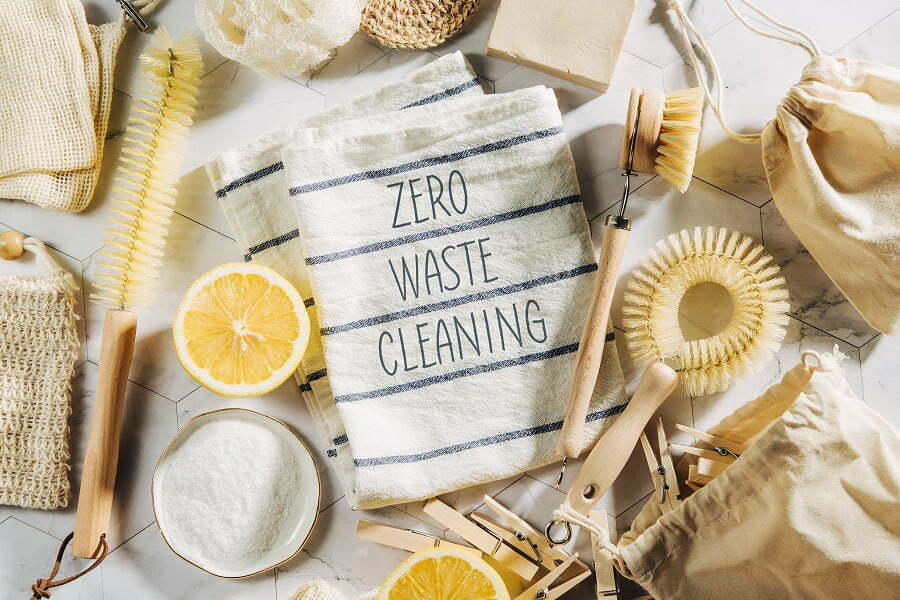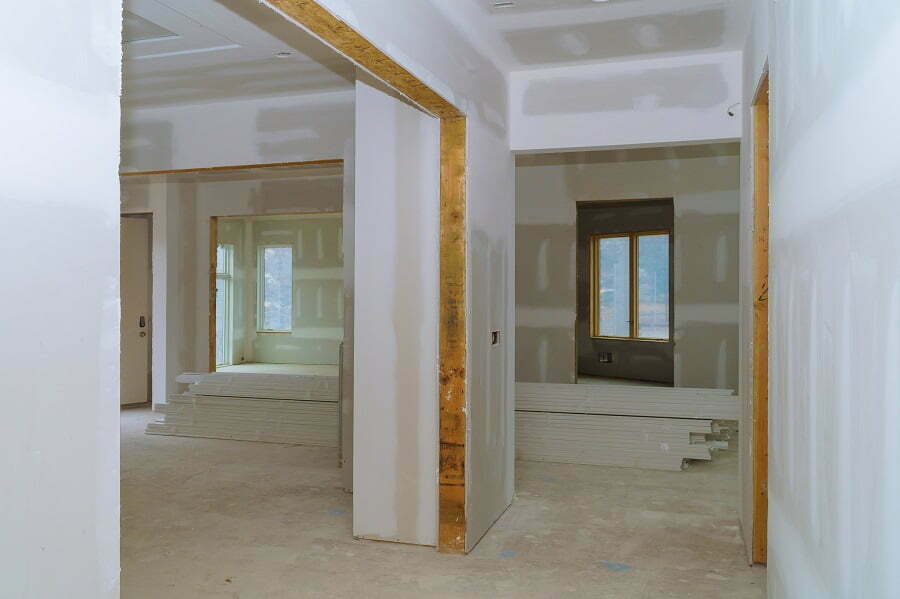Last updated on
In this article, we talk everything about mold, how to deal with it naturally, and prevent it from taking over your home.
We all want a clean, spotless home. However, even if you clean regularly, mold can still occur in the unlikeliest place in your home— popping up in your attics, your heating, ventilation, air conditioning (HVACs), your basements, and bathrooms, and any parts in your home. It is where dampness, darkness, and water exist.
Understanding Mold and Damage It Creates

Mold is a kind of fungus comprising tiny organisms that can be found almost everywhere. It can be white, black, purple, orange or green. Outdoors, mold plays an essential role in nature, breaking down dead plants, leaves, and trees.
Molds thrive on moisture and can multiply quickly using tiny, lightweight spores traveling via the air. Mold spores in small amounts are typically harmless. However, when they start to inhabit a damp spot in your home and are inhaled for long periods, you might experience several health problems including, lung, throat, nose, and eye irritation.
Those with allergies or chronic lung conditions such as asthma, they’ll be at risk of more severe complications and symptoms.
Also, expert cleaners from Servpro shared that mold can also cause lasting damage to household structures and materials if not resolved quickly. Molds feed on organic materials such as paper, wood, fabrics, and some types of glue. It eats away at this material, causing rotting and damage.
Molds eat materials like drywall, wallpaper, wooden studs in walls, carpet, floorboards, ceiling tiles, and other structures inside your home. A worse infestation may cause damage that is enough to lead to the caving of the floorboards, the collapse of ceilings, and the down of walls.
Where Do They Usually Develop?

Mold can grow anywhere water is found. An excessive amount of humidity in your home can condense and cause the growth of mold. Some of the most common spots for mold include:
- Attics
- Wall interiors
- Furnaces
- Around chimneys
- Basements
- Kitchen
- Bathroom
- Crawl spaces
- Under window unit air conditioners
- Ducts and vents
- Under sinks
Ways to Effectively and Safely Deal with Molds
When you see a mold, it’s best to remove it right away before it goes out of hand. And while most people look for toxic and harsh chemicals at first sight of mold, it’s best if you go with a natural cleaner instead. Here are several natural and safe ways to clean and remove molds in your home:
Hydrogen Peroxide
While its name might have ‘chemically toxic’ written all over it, hydrogen peroxide is a natural, non-toxic cleaner. It’s slightly thicker than water and has a pale blue shade in its purest form. Most people might already have this in their home used as an oxidizer, antiseptic and bleaching agent. It is also an anti-bacterial and antifungal remedy that can remove mold, particularly in porous materials.
In using this, you need to spray at least 3% of hydrogen peroxide directly on the porous material. Then let it sit for 15 minutes before wiping it off with a clean, damp cloth. You can repeat the process as necessary. When removed, dry the area with a paper towel or a clean cloth.
For the non-porous surface, create a 50:50 solution of water and hydrogen peroxide and spray it to the surface. After 15 minutes, wash the mixture off with soapy water. Rinse it thoroughly and allow it to dry.
Vinegar
Perhaps one of the most effective, non-toxic, and natural mold cleaners is vinegar. Yes, the one you use for cooking can be an excellent all-around cleaner in your home, particularly in fighting annoying molds.
Vinegar, especially distilled one is mildly acidic and has been shown to effectively remove over 80% of mold species. It is super safe to use and probably readily available from your kitchen counter. Probably, the only negative of vinegar is its strong odor, leaving the area and possibly the room smelling sour.
While most people dilute the vinegar with water, it removes mold in its undiluted form. Transfer an undiluted white vinegar into a spray bottle and spray it directly onto the mold. Don’t scrub or rinse it, and allow the vinegar to work its magic for a minimum of one hour.
If there are stains, you can use our cleaning solution with vinegar for more effective results. You can repeat this as necessary. Once cleaned, make sure to wipe the area with a clean, wet cloth to remove the strong smell of the solution.
If you remove mold from a larger area, then a fan or room dehumidifier can be helpful. It should remove the strong vinegar smell in a short time. Just be careful when using a fan not to blow the mold spores into other areas of your home.
Baking Soda
Baking soda is perhaps the most common all-around ingredient in your kitchen. This extremely versatile product can be used in cooking and baking as well as in deodorizing and cleaning surfaces. It is commonly used as a natural, non-toxic cleaning solution for everything from cleaning stinky sink clogs to removing stains to getting rid of molds and mildew.
Aside from it, it also has the added benefit of absorbing odors, leaving the area smelling fresh as well as removing remaining residue to prevent molds from recurring. Also, since it is gritty, baking soda also makes it easy to effectively scrub the affected area.
Unlike vinegar, though, baking soda is milder and may not work on the more aggressive kinds of mold. Still, as mentioned before, you can use both cleaners together for the best results.
Note: Fresh baking soda is best at removing mold. To test if your baking soda is still fresh, you simply put a drop of vinegar on it. If it bubbles, then it is fresh and should work on cleaning the mold.
There are two ways to use baking soda on cleaning mold:
Make a Paste
Mix a 50:50 solution of water and baking soda in a bowl. Apply the resulting paste onto the mold and allow it to dry. Then, scrub the area with a brush until the mold is gone. Rinse the portion properly and allow it to dry.
Create Baking Soda Spray Solution
To make a spray treatment, you need to dissolve two tablespoons of baking soda in two cups of water in a spray bottle. Spray the solution on the mold and scrub with a brush. After that, rinse the area, pray again, and let it air dry.
For severe cases, you can use a combination of both paste and liquid spray treatment. First, apply the paste solution followed by the spray treatment.
Lemon Juice
Like vinegar, lemon juice contains acidic content that makes it effective at removing mold. Unlike vinegar, though, this natural and non-toxic mold cleaner leaves a refreshing, clean aroma instead.
In using lemon, you first start by cleaning the area with water and soap. Once rinsed, you can apply the lemon juice directly to the mold. To properly clean mold, use it in its undiluted form. Then, scrub the area immediately with a scrub sponge or a brush. You can re-apply lemon as necessary until you have satisfactory results.
Lemon juice can also prevent mold in some areas in your home, particularly in the bathroom and kitchen. While it’s already a powerful cleaner on its own, you can combine it with other natural cleaners to improve its effectiveness in removing stains.
Grapefruit Seed Extract
This natural mold cleaner is rich in antioxidants and essential oils. It’s a powerful deodorizer and anti-microbial agent that can effectively eliminate over 60 kinds of yeast and bacteria. Grapefruit extract is most effective on non-porous surfaces. But it can also be used on porous ones.
Notably, commercially produced grapefruit seed extracts are less natural than others, with most highly processed. Thus, you need to perform proper research if you’re looking for an “all-natural” grapefruit seed extract.
To use grapefruit seed extras for cleaning mold, you need to mix 10 drops of the extract in a cup of water. Then, place the mixture in a spray bottle for easy application. Spray the solution on the affected area and let it sit for 10 – 15 minutes. Then, use a brush to remove the mold and rinse thoroughly. You can repeat the process as necessary. Once you are satisfied, you can spray any remaining solution on the area and let it dry. It should help prevent the recurrence of mold in the future.
Tea Tree Oil
Tea tree oil came from the Australian Melaleuca Alternifolia tree. This all-natural essential oil contains antimicrobial properties that can remove various kinds of fungi, mold, and mildew. It can be used on both porous and solid material but is more effective on the latter.
Like vinegar, the only disadvantage of this cleaner is its strong odor. Thus, it may not be best for larger areas. If used in smaller ones, you need to open the window for proper ventilation.
You can create a natural mold cleaning solution with tea tree oil by mixing 2 teaspoons of the oil with either 2 cups of water or distilled white vinegar. If you choose vinegar, then be prepared for the resulting strong odor that can last for hours. While the odor is not harmful, it can be quite uncomfortable for those staying at home.
Once the solution is mixed, place it in a spray bottle and spray directly on the affected area until wet. When used on porous surfaces, allow the mixture to soak into the surface and deep clean the mold. You can allow the solution to set for at least an hour or so. Then scrub the area as needed.
For stubborn or aggressive mold infestation, you’ll have to apply the solution multiple times and scrub harder to remove mold stains.
Note: Always look for tea tree oil with 30% or more Terpinen-4-ol and 10 – 15% Cineole for a stronger cleaning effect. Also, while it is a natural cleaner, tea tree oil can be toxic when swallowed. So, make sure to store and use it carefully. Any bottle that contains a mixture of tea tree oil should be clearly labeled and stored out of reach of children and pets.
Consider Hiring Professionals
If mold grows early, then you can easily handle it using the natural mold cleaners mentioned above. However, for extensive mold infestation, consider hiring a professional.
How extensive should it be?
The Environmental Protection Agency (EPA) suggests that if mold covers 10 feet or more, then you need to call in a professional. Removing large mold colonies requires a large number of heavy-duty cleaners and chemicals as well as proper disposal of the infested building materials.
Another indication is if the mold is rooted into the wallboard or even the attached 2x4s. The material should be safely and carefully disposed of and only professionals can ensure proper removal.
Lastly, the intensity of the mold issue and the kind of mold can be the deciding factor. For instance, black mold that appears almost dirt-like and fuzzy can be problematic to get rid of as a DIY project. In this case, it’s well worth the expense and time to get professional assistance for this kind of mold.
The Takeaway
Regardless of how much of a clean freak you are, it’s natural to experience mold in your home now and then. However, it doesn’t mean that you want to share your home with unhealthy spores.
Whether it’s the fuzzy white patches on your basement floor, the slick orange film forming on your kitchen drain, or the slimy black spots on your shower curtain, household mold is unsightly and unwanted. By following the tips mentioned above, you can banish any mold growth at home, create a healthy environment, allowing your family and pets to breathe clean and healthy air.
Related reading:
Table of Contents





